#ljósálfar
Text
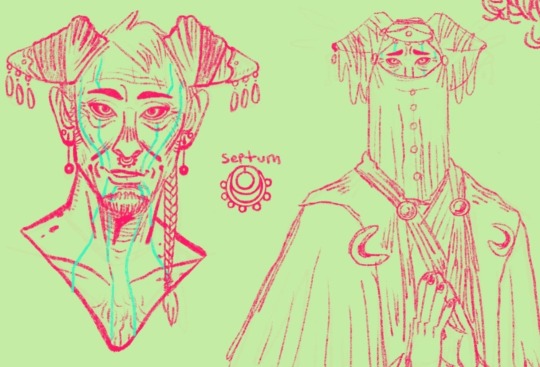
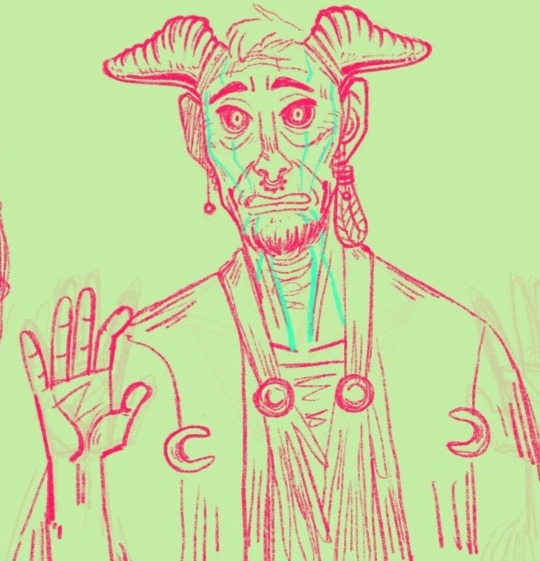
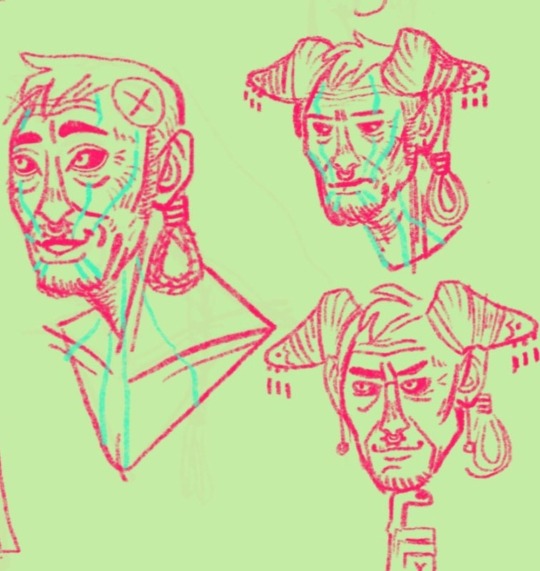
🧝♂️
8 notes
·
View notes
Text
My favorite Swedish Mythical Creatures

Huldra
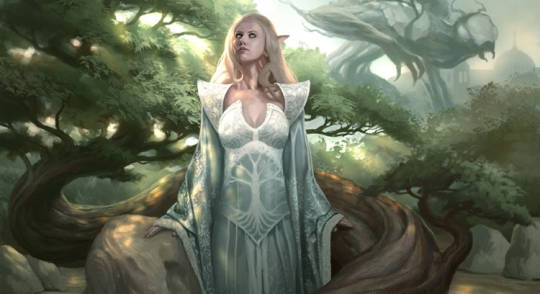
Elves
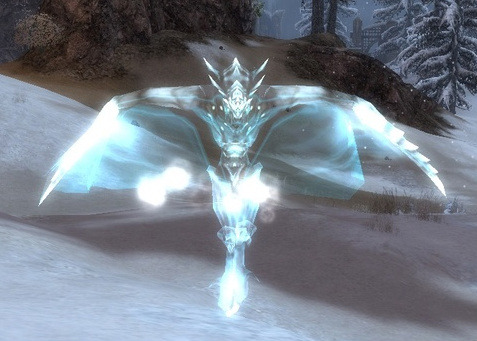
Vættir
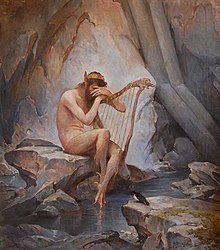
Fossegrimen
1 note
·
View note
Photo

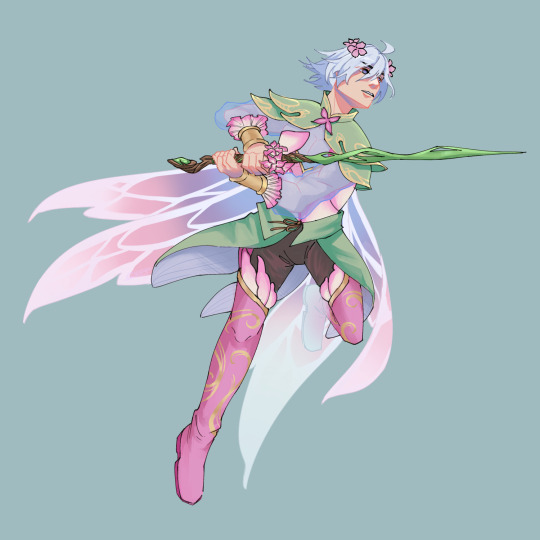
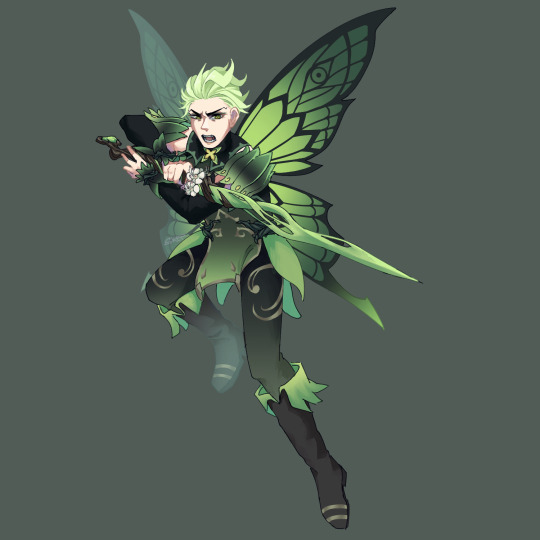
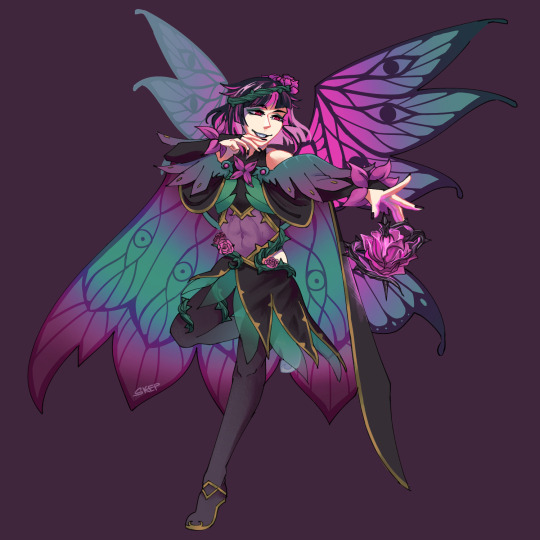

[FEH x TWST AU]
Diasomnia but I actually make them fairies.
Some notes about this AU under the read more (Contains Fire Emblem Heroes lore)
Other posts of this AU:
[ Ignihyde ]
Silver is the only Ljósálfar while the rest are Dökkálfr with Malleus being the King of Dökkálfheimr.
Lilia probably gave Silver drink the nectar of gods when he was a child
Sebek.... look, he probably saw Malleus when he was dreaming and decided to drink the nectar too
Malleus’s dragonstone is embedded into his staff but can be taken out.
No one in Dökkálfheimr really tries to question or go against Silver being a Ljósálfar because.. Malleus and Lilia are scary lmao
#twisted wonderland#twst#Malleus Draconia#Lilia Vanrouge#Sebek Zigvolt#Twst Silver#Fire emblem heroes#FEH#Lilia please give your boy a last name#This isn't a fully fleshed out AU I just wanna draw pretty designs lmao#Drawing Malleus reduced my lifespan by 30 years#my art
5K notes
·
View notes
Text
Álpheheimr - Analysis Overview of the Land of the Elves - Dissertation
Within the current lands of Adonis, the means of practicing religion and historical belief systems continue to vary based on personality and prior culture, but all of them anchor onto a similar concept, the most similar concept to our understanding being the Old Norse mythological system of Yggdrasil and its connected lands. There's an undercurrent of understanding amongst the people of Adonis that implies that the development of NG-AD0372 was almost meant to be, and that its creation was garnered from the very giants it now creates existing prior, just spreading the gift to more men and helping them become who they were meant to be from the beginning. This feeds into where it all began, and from unearthed documentation, epic poems, and tomes dating back thousands upon thousands of years, it seems that it might just be grounded in some form of reality.
These epics and tomes are filled with remarkably vivid imagery even prior to the exceptional restorative technology the nation of Adonis has at its disposal, and upon applying such things, these stories may as well be as common as a Marvel comic or holy scripture. The fantastical nature of these images and what they imply left people bewildered and breathless at first, but are now such a source of imaginative excitement, hoping that, somehow, these men will come to exist again as Alpha Dom infiltrates the fabric of humanity within Adonis, an ultimate return to form.
Yggdrasil's lands have come to represent somewhat-individualized belief systems in Adonis, even representing archetypes and personalities of individuals, much like the Zodiac. The first to address, with the largest following, from the devout to the casual, would be the land of Álpheheimr--the land of the elves.


One important distinction between the comparable Old Norse mythology structure and that of Adonis's is that there is no "Midgard"--the humans of this realm had their own individualities and characteristics but permeated nearly every sect of Yggdrasil, excluding the more exclusive sects such as Vanaheim and the near-uninhabitable zones like Niflheim and Jötunheimr. The sense of scale of these men is egregious--Jötunheimr has some of the least currently-discovered documentation but is noted to be the "Land of the Giants", while some elves within Álpheheimr seem to tower above others, seemingly ranging from 8, to 10, maybe even 15 feet tall or larger. How does this quantify a land of giants? What will scholars find?
Despite the vast amounts still to discover, due to Álpheheimr's essence representing a passive, kind path of life, "love thy neighbour"-adjacent, much has been discovered and unearthed about the tumult within this realm. There exist the normal álfr, of similar complexion to humans, which are the traditional visual of elves training, defending their towns, and living fruitful lives in general sanctity.

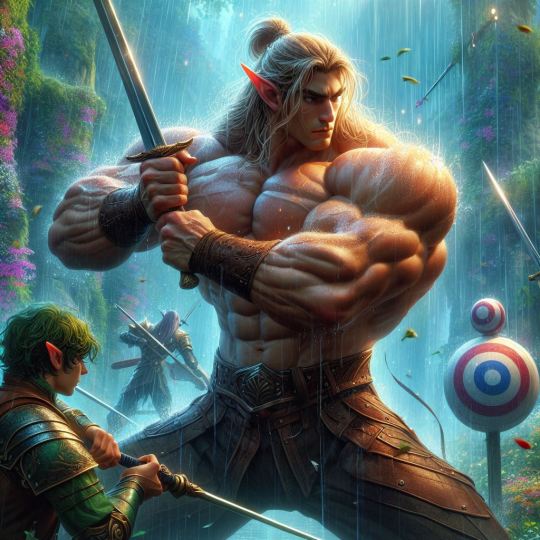
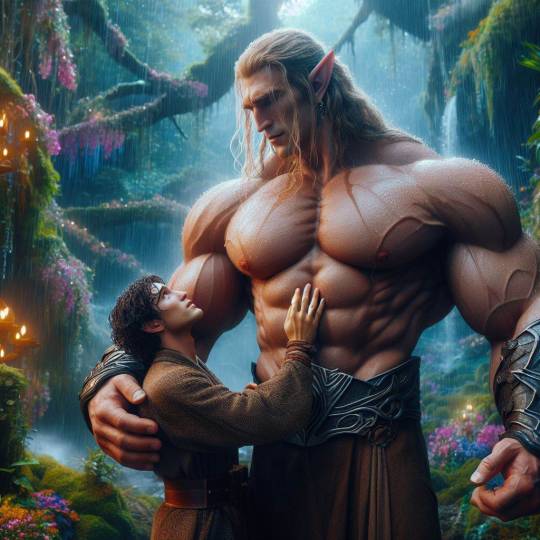
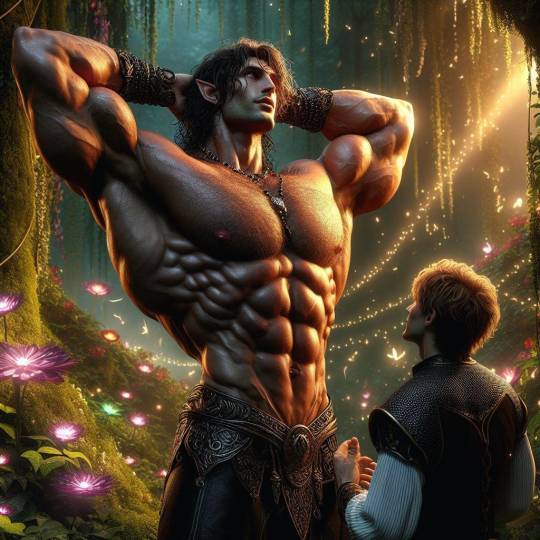
But intriguingly enough, it's as if the sun and moon that preside over these lands are like a lens, switching factions to a dormant state as another rises and takes over, as if three timelines exist simultaneously on the same thread--one of the aforementioned álfr, and that of the dökkálfar and the ljósálfar--dark elves and light elves. Between these lens switches between daylight, moonlight, and twilight, the foliage and greenery of the forests shifted and morphed into the respective faction's dominance, nightblooms and mullberries draping across the hills as the dökkálfar rose from underground, lilies of the valley and orchids blossoming from the dead bushes as the ljósálfar materialized from the skies, and once again returning to the daylilies and berry bushes ripe for picking as the álfr awoke. Conflict inevitably arose during these periods of change, and this is what justifies these immense elven statures and musculature. It was quickly discovered that it exists out of necessity, and consequentially, out of worship by those that it protects.

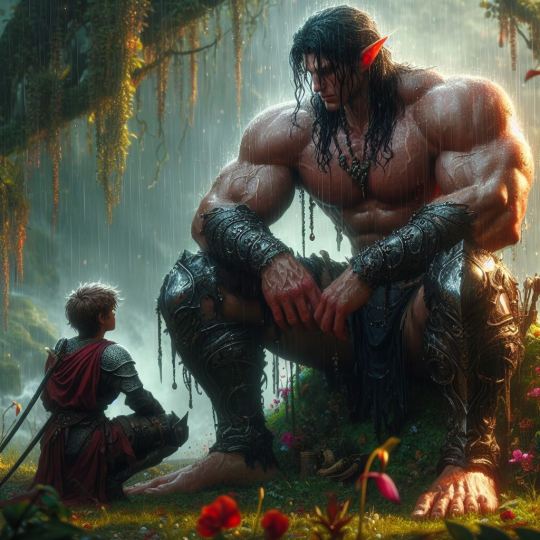
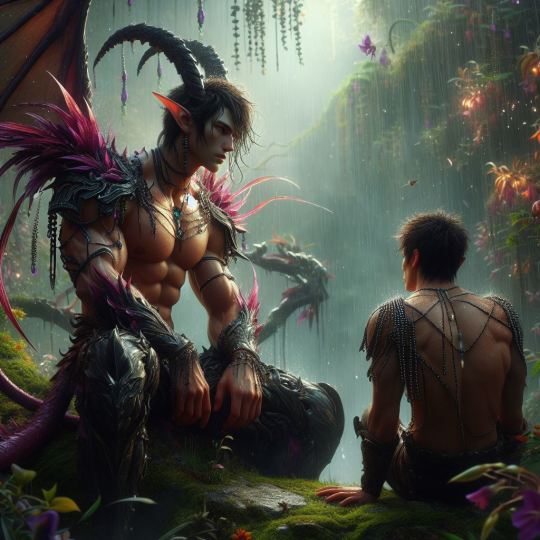


The dökkálfar were borderline demonic, ravaging the landscape as they sought out sustenance and dominance for the time they could reign, seeking comforts they could no longer achieve. Fallen from other echelons of álfr, the dökkálfar were stripped of the capability to experience certain sensations they yearned for--contentment, peace, love. The closest that could be achieved would be the humans that aligned themselves with their faction worshiping their forms and being there for them as trainees and confidants. The dökkálfar valued them greatly, as the sensation of tending to a lesser being was the closest they could get to feeling the pleasantness of caring for another being, and this dynamic allowed them to shift from beings of destruction to beings of self-preservation, only doing what they had to to continue feeling alive.
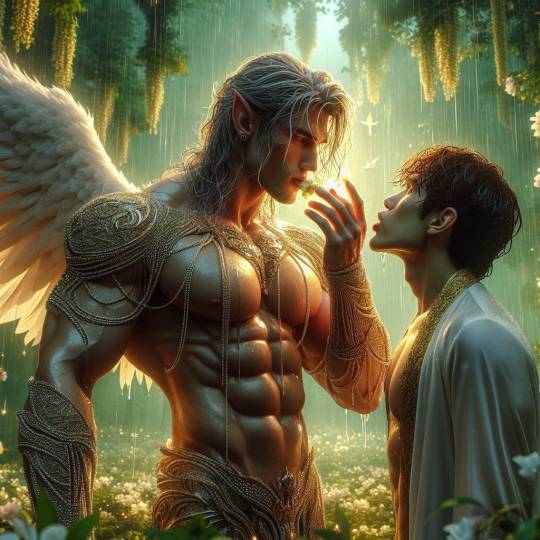



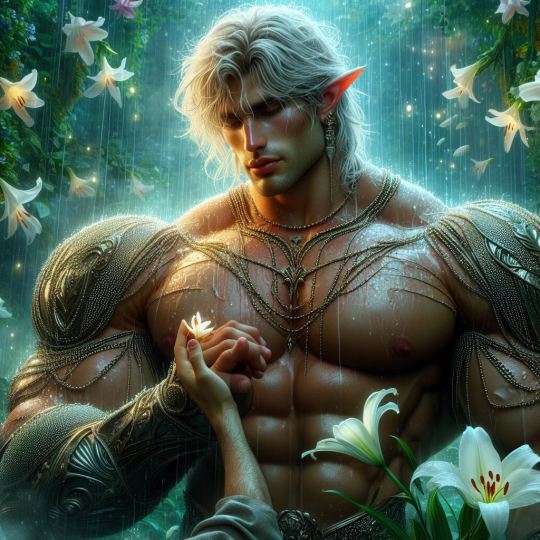
The ljósálfar were a somewhat mysterious and mischievous faction, and responsible for planting the majority of the lifeblood that fed into the land. Bountiful ambrosia seeping into the dirt, feeding their worshipers, spilling from the skies and coating their bodies during their time on the ground, was a sought-after source by the dökkálfar, who would drain the land and kill it if they could due to how it made them feel--specifically, the ability to fully feel again. This led to resentment from the ljósálfar as they sought to renew and invigorate the land with life. The mischief mentioned before lies in the way they interact with their worshipers, as while the dökkálfar will tend to their humans in a parental, guardian manner, the ljósálfar, in multiple instances, see them as devout playthings, toying with their emotions and desires and the inherent pull the ambrosia has on their psyche. The wondrous illusion of grandeur would always fade as vicious combat ensued once the dökkálfar were able to attain some of the golden liquids and fruits. It's a tragic sight to bear witness to as you see their consumption allow a smile to cross their lips, leaning in for a kiss with their humans, as the cycle continues to chase that feeling once again, to the point of bloodshed.



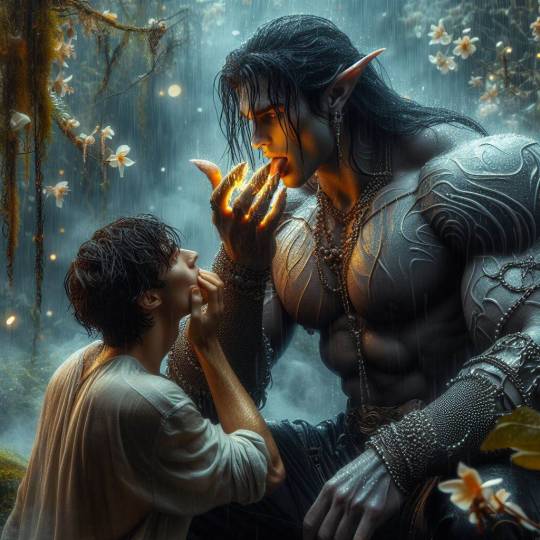
More analyses will be presented on how these factions came to be--whether the ljósálfar exist due to ascension of standard álfr, more explanation on the descent to madness of álfr to dökkálfar, and just how their societies interact within themselves and with others. There's a vast amount of imagery and depiction present for Álpheheimr.
32 notes
·
View notes
Text
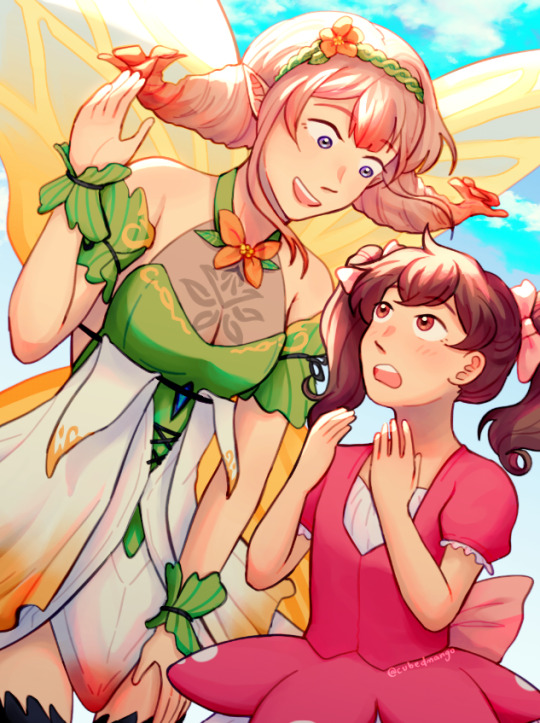
"My name is Peony. I come from the land of beautiful dreams...with a lovely dream, just for you." 🌟
"She's just like the fairies in my fairytales!" 🎀
I have a really nice commission from @cubedmango! I thought it would be cute to have a Fairy type trainer like Arabella to meet Peony (even though Peony is a Ljósálfar (light elf) in Fire Emblem terms). 🤗
30 notes
·
View notes
Text
Resplendent Adult Tiki is a fantastic design and I'm SO hyped for it in this essay I will

So first of all, I know the álfar themes are a bit overused on female resplendents HOWEVER miss Tiki is always sleepy!

And Dökkálfar works especially well because when she was a child, she was suffering from nightmares of becoming an evil dragon :(
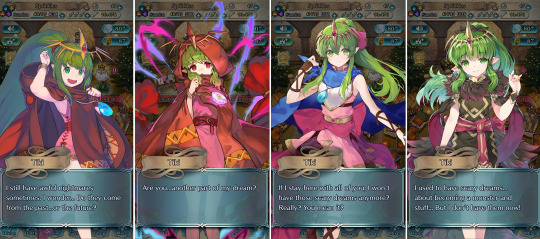
As TheShadowKing66 pointed out, her top is taken basically directly from Rearmed!Plumeria. HOWEVER... she also has design elements reminiscent of course from her base art, as well as Naga! (The cut of the top/collar, the little spiky floral skirt bits)

And LOOK AT HER WINGS those are GRIMA EYES 👁️ in them! And the wings come to a point like a Plegian crown! phantom-miria also pointed out when I was screaming in our DMs that her boots look like a Plegian mage's
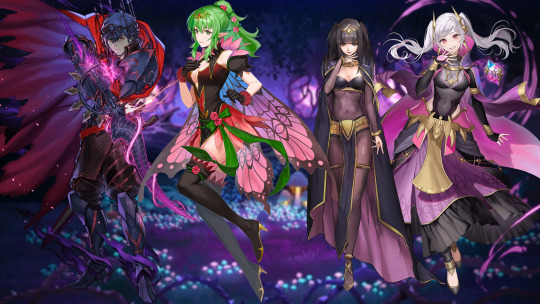
And the parallelism between the álfar and dragons is just SO good... especially since this is the Divine Dragon, VOICE OF NAGA, wearing nightmare realm and Plegian-inspired clothing. It's basically saying:
Dökkálfar = Fell Dragons, Ljósálfar = Divine Dragons

AND LEST WE FORGET Lucina—who has the Mark of Naga in her eyeball from a pact her ancestors made with Naga, and who seeks out Tiki's help as the Voice of Naga to defeat Grima in the game's timeline—has a butterfly motif in Awakening

On a different note, I've seen a lot of people complaining about how many álfar designs we've gotten, and it's true! We've gotten 20 álfar total (10 of each), all women, of the 55 women designs (versus 38 males). But, I think the fairy favoritism is starting to wane based on the last few months of designs. Plus, we have the possibility of designs from Yggdrasil and, of course, Vanaheimr. I would love to see a Resplendent Stahl in fairy garb since he's always smeepy, or Forrest since he's very fashion-forward. But for what it is now, it looks like we're starting to get some diversity back (especially compared to the earlier half of the year. We had 3 álfar in a row before this LOL...)

Anyway, I love Resplendent!Adult!Tiki. She is gorgeous, and I love how she has elements combining Dökkálfheimr, Plegia, and her roots as a Divine Dragon. Thank you for coming to my TED Talk. Here's the Twitter version if you prefer.
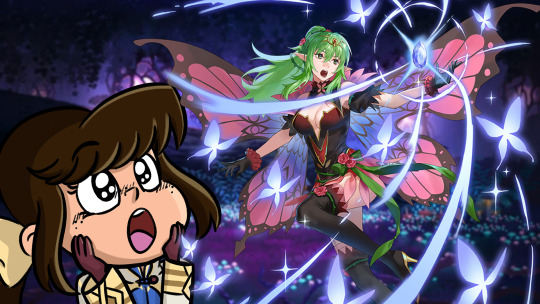
#fire emblem heroes#feh#feheroes#tiki#adult!tiki#fe tiki#fe13#fire emblem awakening#fire emblem tiki#resplendent!adult!tiki#Dökkálfheimer#rearmed!plumeria#mythic!naga#tharja#fallen!chrom#rearmed!f!robin#lucina#in this essay i will
30 notes
·
View notes
Text

My character Élodie in Ljósálfar attire
#fire emblem oc#fire emblem heroes#fire emblem 3 houses oc#this took me forever ;o; but i wanted to indulge a bit
36 notes
·
View notes
Note
What do you mean Quicksilver “falls between two stools” ?
The idiom "falling between two stools" means to try to do or be two things at the same time, and thus fail at both.

I think a big part of Quicksilver's problem as a character is that Marvel has never really been sure where to put him: he was introduced as an X-Men anti-villain, but left the Brotherhood of Evil Mutants after seven issues. He then becomes an Avenger as part of Captain America's "Kooky Quartet" and there for a couple years - but then goes back to the Brotherhood for a bit, then goes back to the Avengers, then kind of falls into the Fantastic Four and Inhumans' orbit when he marries Crystal the Inhuman princess.
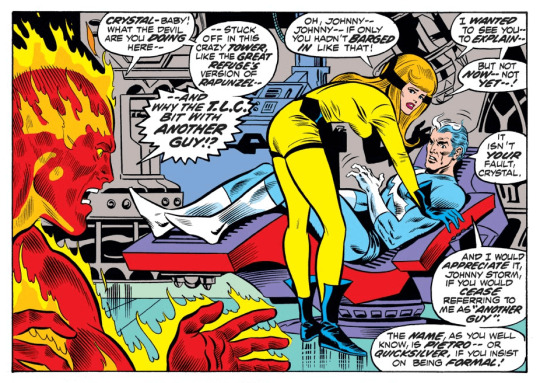
Unfortunately for Pietro, his wife turned out to be a drama-seeking narcissist who deals with boredom by having affairs, and his in-laws were a bunch of racists - which causes him to become an Avengers villain under mind control.
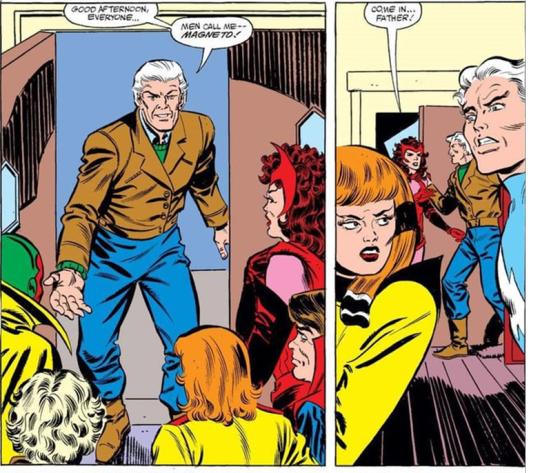
Then Marvel went with the retcon that Wanda and Pietro were Magneto's kids - which I rather like as a progression and complication of their tortured relationship since the Brotherhood days - except that Marvel kept changing its mind about it and started retconning and re-retconning Quicksilver's backstory, which mired him in an endless loop of bad, repetitive storytelling from 1979 through to 2014. While the core group of Magneto, Pietro, and Wanda is a solid vehicle for soap opera drama, there are only so many permutations that you can do, and it was surrounded by an endless parade of Mount Wundagore, the High Evolutionary, and "the Whizzer" bullshit that no one likes or cares about, except for Bova the bovine midwife - Bova is cool.

Then Marvel shifted Pietro over to the X-books by having him become a founding member of the government X-Factor team in 1991 - which was the first time that he'd been a sustained part of the X-Men's world since 1965 - and he stuck around even after Peter David's run ended. However, in part because Pietro is, to be charitable, an aloof and anti-social dick (incidentally, why is it that speedsters in the Marvel universe are all assholes with anger issues whereas speedsters in the D.C universe are usually kindly goofballs?), his mutant identity was never really developed beyond his connection to Magneto until the Decimation when he went fully crazy and did some really unforgivable stuff to his daughter under the influence of Terrigen.
It also didn't help that in the interim between leaving the Brotherhood and joining X-Factor, the X-books got another arrogant hot-tempered speedster with a co-dependent relationship with his twin sister - except that Northstar is much faster and more powerful than Pietro, and has a way more interesting character arc as the first openly gay Marvel superhero, dealing with issues like coming out of the closet, AIDS, and gay marriage as well as more standard comic book fare like Quebecois separatist terrorism, whether his use of mutant powers during the Olympics constitutes cheating, and whether he has Ljósálfar heritage.

Sadly, I think Northstar ate Quicksilver's lunch while Marvel couldn't make up its mind where to put Pietro.
35 notes
·
View notes
Text
Hey, I need help in understanding which option is seen as more ✨yes.✨
PS. Imagine any of these w a dark aesthetic + research them if you have time and don't know them.
#evan rosier#rosekiller#slytherin skittles#barty crouch jr#maraders era#skittles squad#pandora rosier#rosier#rosier twins#marauders
10 notes
·
View notes
Note
Hi! I saw your post on the alfar (and land spirits in the context of heathenry). I was wondering if you might know of or want to share some more facts specifically unique to the Alfar? I’m really interested in them because there’s been a lot of debate I’ve seen on where they differ from the Irish fair folk and where they are similar. When I first learned about norse mythology the book I read depicted them very similarly to Irish faeries. But now I’m wondering based on your last post if that book’s depiction was misleading? UPG is acceptable too! If you have any experiences with them.
Hi there! Thanks for coming to me with your question! It really is a nuanced and interesting topic, which is why I wanted to make a full post out of this. I've actually mean to post about álfar for a while, so I guess now’s my chance! However, the sources we have concerning them aren't many, which makes it quite difficult to describe them, or the way the were regarded in pre-christian germanic societies. What we can say for sure is that they are supernatural beings tightly linked to nature, and that the norse álfar are actually the oldest known elves. They could be nature spirits, or even gods! That last possibility is due to their being constantly called "Vanir" in at least one piece of norse poetry. They are also associated with death, since king Olaf Geirstaðir was said to have become an elf after his passing, roaming around in his burial mound. Indeed, elves are said to dwell in burial mounds, and they are sometimes called “mound-dwellers”. This partly explains the álfar’s association with ancestors, but more on that later. Depending on the tradition, they can also inhabit forests, the sky, bodies of water and such. In Iceland, mountain elves are called Huldufólk, or “hidden people”. As you can see, the very definition of “elf” in the norse pagan sense is already hazy! So let's dive in a little deeper, shall we?

Snorri Sturluson divided the álfar into two groups: the ljósálfar and the svartálfar. According to him, the first were "light elves" and the second, "dark elves". Both these groups are said to be very skilled at magic and/or smithcraft. However, the svartálfar are often called dwarves and are said to live in Svartálfheimr, one of the nine worlds. It is also said that they would turn to stone if exposed to sunlight. The ljósálfar as Snorri describes them are a lot closer to the way we are used to picturing elves: luminous (they are associated with the sun), beautiful, etc. They are allies of the Æsir and it was conjectured that the God Yngvi-Freyr is their ruler. The reason for this is that Freyr is said to dwell in the world of Álfheimr, homeland of the elves, and his name is often preceded by Yngvi, meaning “lord" or "king". As a biased heathen, I can say that Freyr being ruler of the elves is pretty much SPG, even though it was never explicitly proven why such a belief was around before and during the Scandinavian iron age.

Now, it isn't certain the germanic peoples even made a distinction between these "light elves" and "dark elves", or even between them and jötnar or landvættir. The differences in the way these beings were perceived all depend on the era, the social class and the area. There is evidence of specific álfar worship, however. The Álfablót was a type of sacrifice made to álfar at the end of autumn, when every crop had been harvested. Their worship often overlapped with that of the ancestors, the dísir and/or Freyr. According to folklore, elves can be seen dancing (“älvdanser”) over meadows, sometimes at night and sometimes on misty mornings. According to folklore, watching them dance would make you lose years of your life within minutes. Their dancing would leave circles called älvringar ("elven rings"). Disrespecting these rings would bring about terrible consequences, such as illness. Though they are generally considered forces of good, or at least light, their role in norse myths and stories can be that of antagonists. In the Völundarkviða for example, one the most famous elven character appears: Völund (or Wayland) the Smith, a famous craftsman who, after being wronged by a king, exacts a cruel revenge upon him by killing his sons. Völund is very popular in oral tradition and he's actually quite the complex character, showcasing features of both Snorri's "light elves" and "dark elves". He is peaceful but he can also be wrathful and merciless. The latter trait seems to fit with scandivanian folklore, according to which elves are capable of causing illness. This duality is also present when it comes to the álfar’s other magical influences. It is said they cause both fertility and sterility.

As Christianity spread in Europe, the elves were either demonized or turned into angels, just like Snorri had done to separate the “good elves” from the more mischievous ones. Still, it seems no incarnation of the elves was ever truly good or truly bad. Most of them are, at least according to me and many other norse mythology enthusiasts, morally grey beings who can both aid and punish. I know this makes them all the more akin to the Irish fair folk, but the major difference between these two mythological beings is the way they are interacted with. Nonetheless, there are very little sources on how the álfar were worshipped historically. Since this worship is performed in vastly different ways within neo-pagan circles, it’s hard to list precise álfar worship rituals. Some of us present them with water, tea, herbs, local fruit or reapings from our gardens, as well as coins, ribbons, flowers, etc... Personally, the hörgr is an integral part of my relationship with the elves. Since it’s outside, it simply feels natural to make my sacrifices to álfar above it. Plus, sacrifices to them used to be made in boulders or stones with cup-like cavities, which were said to be elf-homes and have healing powers. People tend to honor them at the end of autumn and/or at equinoxes, since the latter are times of natural balance. Those are pretty much the basics of human-álf interaction!
I hope this answered you question well! It’s probably too long and detailed of an answer, so I’m sorry about that, I couldn’t help myself. Wishing you a great and peaceful day!
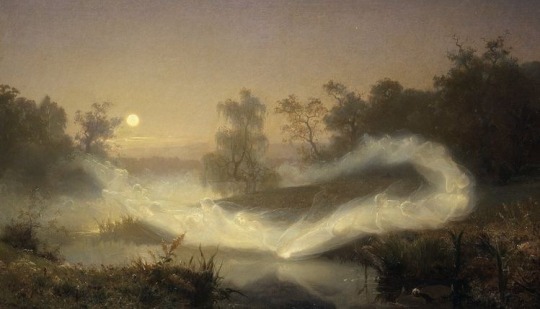
#alfar#elves#Freyr#norse mythology#norse paganism#norse myths#mythology#norse polytheism#polytheism#paganism#heathenry#ask#asks#spirits#spirit work#land spirits#elf
123 notes
·
View notes
Text
I want to hold Mimir like this


#smile :+)#i need to add gilf zone to my bio LOL#Mimir#i started playing gow just for him but im actually enjoying it. this is my first gow and im kinda glad i started here. good narrative#and I enjoy dad Kratos. i dont think i would enjoy the past gow games because he is not dad Kratos yet LOL.#im also obsessed with the gow2018 Ljósálfar but no one else on the planet seems to give a shit about them or the Dökkálfar 😭
33 notes
·
View notes
Text
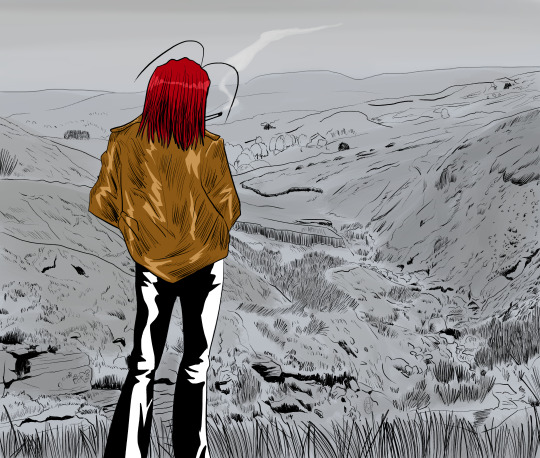
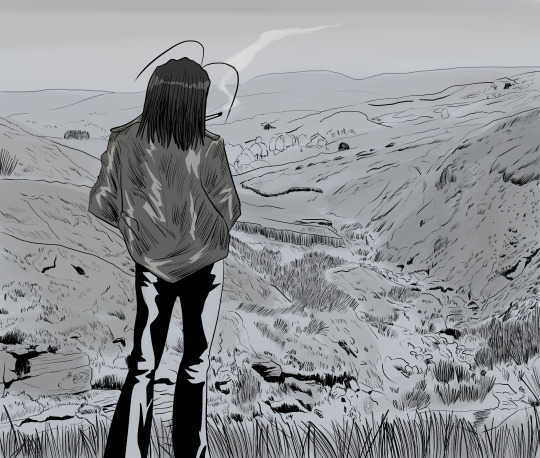
Monthly Minekura Christmas edition
Day 11 “Elf”
I know this might seem strange but the background is actually linked to the theme of 'elf' because that's Alden Valley, based on this photo that inspired me with the subject. Alden derives from Old English ælf ('elf') + denu ('valley'), thus meaning 'elf-valley'. I didn't want to use the Christmas version nor the Tolkien-based elves, and I couldn't find an equivalent in Chinese mythology. I prefer to stick with old traditions but it is complex and sometimes even confusing, so I preferred to use a place in England that was once associated with elves. Elves appear in some place names, though it is difficult to be sure how many of other words, including personal names, can appear similar to elf. The clearest English examples are Elveden ("elves' hill", Suffolk) and Elvendon ("elves' valley", Oxfordshire); other examples may be Eldon Hill ("Elves' hill", Derbyshire); and Alden Valley ("elves' valley", Lancashire). These seem to associate elves fairly consistently with woods and valleys. In Old English, elves are most often mentioned in medical texts which attest to the belief that elves might afflict humans and livestock with illnesses: apparently mostly sharp, internal pains and mental disorders. The most famous of the medical texts is the metrical charm Wið færstice ("against a stabbing pain"), from the tenth-century compilation Lacnunga, but most of the attestations are in the tenth-century Bald's Leechbook and Leechbook III. This tradition continues into later English-language traditions too.
Because of elves' association with illness, in the twentieth century, most scholars imagined that elves in the Anglo-Saxon tradition were small, invisible, demonic beings, causing illnesses with arrows. This was encouraged by the idea that "elf-shot" is depicted in the Eadwine Psalter, in an image which became well known in this connection. However, this is now thought to be a misunderstanding: the image proves to be a conventional illustration of God's arrows and Christian demons. Rather, twenty-first century scholarship suggests that Anglo-Saxon elves, like elves in Scandinavia or the Irish Aos Sí, were regarded as people. Keep in mind that like words for gods and men, the word elf is used in personal names where words for monsters and demons are not, so elves are people. In Old English, the plural ylfe (attested in Beowulf) is grammatically an ethnonym (a word for an ethnic group), suggesting that elves were seen as people.
Elves are known in Norse tradition, notably in Snorri Sturluson's Prose Edda, which talks about svartálfar, dökkálfar and ljósálfar, but these terms are attested only in the Prose Edda and texts based on and it is now agreed that they reflect traditions of dwarves, demons, and angels, partly showing Snorri's "paganisation" of a Christian cosmology learned from the Elucidarius, a popular digest of Christian thought (this is why I take with a grain of salt Prose Edda when I want to learn about Norse religion). I prefer to focus in Old Norse poetry, particularly the Elder Edda. Elves are frequently mentioned in the alliterating phrase Æsir ok Álfar ('Æsir and elves') and its variants. This was a well-established poetic formula, indicating a strong tradition of associating elves with the group of gods known as the Æsir, or even suggesting that the elves and Æsir were one and the same. There are other sources that talk about elves such as Sagas of Icelanders, Bishops' sagas, and contemporary sagas. In Kormáks saga there is the mention of álfablót ("elves' sacrifice"), and in Eyrbyggja saga we can find the existence of the euphemism ganga álfrek ('go to drive away the elves') for "going to the toilet".
Fun fact: by the end of the medieval period, elf was increasingly being supplanted by the French loan-word fairy. An example is Geoffrey Chaucer's satirical tale Sir Thopas, where the title character sets out in a quest for the "elf-queen", who dwells in the "countree of the Faerie".
I imagined Gojyo (I find him the best for these kind of works) being alone in this place, pondering about his life and letting thoughts roam freely before maybe elves try to steal them. Here you can see two versions, a black and white version which resemble a manga page and another one where Gojyo chromatically stands out. I was unsure which posting, so asked a dear friend of mine and she liked both and eventually I decided to post both. Gojyo's pose was partially inspired by the famous painting of Caspar David Friedrich, Wanderer above the Sea of Fog. Ok again sorry for long post.
Credits:
Saiyuki Reload Blast © Kazuya Minekura, Platinum Vision, 2017-present
15 notes
·
View notes
Text

The Map of the Nine Realms
By: kade32 [DeviantArt]
Source
Originally posted:2018/12/12
Yggdrasil, commonly known as the "World Tree" which contains and holds the Nine Realms together.
THE NINE REALMS:
Ásgarðr (Asgard), the homeworld of the Æsir gods and Ásynja goddesses and the Bifrost.
Valhöll (Valhalla), Odin's realm in Asgard and the heavenly home of the valkyries who decide which warriors die in battle and who lives.
Valaskjalf, Odin's palace.
Þrúðheimr (Thrudheim), the residence of Thor.
Breiðablik, the residence of Baldr.
Himinbjörg, the dwelling of Heimdallr.
Álfheimr (Alfheim), a beautiful, prosperous and bright realm free of the iron grip of war and famine and the homeworld of the álfar/ljósálfar (light elves).
Miðgarðr (Midgard), also known as Earth, the homeworld of the mortals.
Vanaheimr (Vanaheim), a peaceful realm of great nature and the homeworld of the Vanir, lesser gods opposite to the Æsir.
Jötunheimr (Jotenheim or Udgård), the frozen, snowy and mountainous realm of endless winters and the homeworld of the jötnar (frost giants).
Múspellsheimr (Muspelheim), a fiery, molten realm of fire and heat, the homeworld of the "sons of Muspel" (fire giants) and their ruler, Surtr.
Svartálfaheimr (Svartalfheim), a darkened realm parallel to that of Nidavellir and the homeworld of both the svartálfar (black elves) and the dökkálfar (dark elves). Niðavellir (Nidavellir), a section of Svartalfheim inhabited by of the dvergar (dwarves), blacksmiths and craftsmen of the Æsir gods.
Niflheimr (Niflheim), a cold and lifeless netherworld enshrouded in a misty cloud of fog where the souls of the dishonorable arrive upon death.
Helheimr (Hel), the dark, labyrinthine realm of Hel where the evil souls become trapped for eternity and the homeworld by Hel, daughter of Loki.
[Text was copied from original post.]
#kade32#kade32 DeviantArt#the map of the nine realms#the map of the nine realms art#yggdrasil#yggdrasil art#yggdrasil world tree#yggdrasil world tree art#world tree#norse#norse god#norse gods#norse mythology#norse mythology art#norse mythology designs#norse shaman#norse myths#norse myths art#norse pagan#norse paganism
179 notes
·
View notes
Text

ljósálfar flayn
223 notes
·
View notes
Text
— OC INTERVIEW
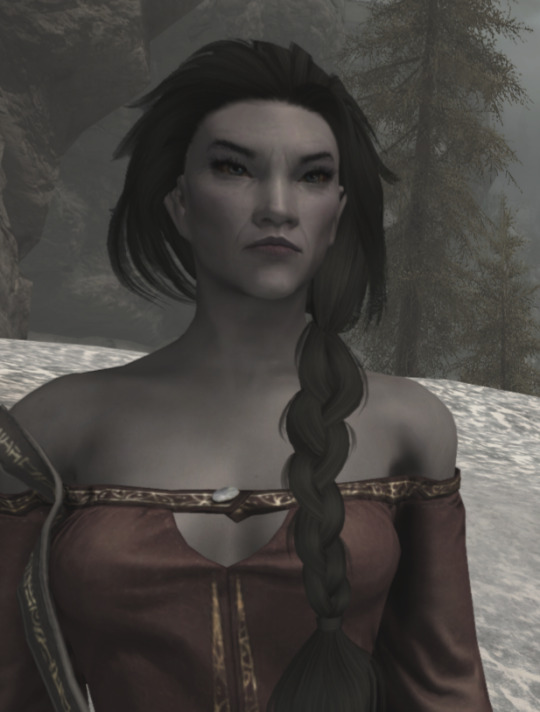
name: galsveni r'nur
nickname: gal, sven/sveni
gender: cis woman
star sign: virgo sun, virgo moon, taurus rising
personality type: hard to place an mbti, but describing it: calloused, though not mean-spirited. wary and weary to an exhausting degree. galsveni has seen enough loss in her lifetime, and she would rather not see any more. even if that means keeping people at arm's length.
height: unknown; pulling from other fantasy sources and their guestimates/canonical heights... probably around 7ft.
orientation: lesbian
nationality/ethnicity: dökkálfar (dark elf); native to alfheim.
favorite fruit: cherries. they're definitely a luxury, but the few times that a market should last (though they were more common, especially with merchants from other realms, in the earlier stages of the war) in alfheim... galsveni will buy herself cherries. as a treat.
favorite season: mid-winter/late winter
favorite scent: organic scents; think woody and smokey, with the occasional hints of vanilla or something more spicy.
coffee, tea, or hot chocolate: tea, 1000%. it's easy to brew, requires less trading for (re: easily obtainable herbs), and provides just enough energy to not distract her from her work
average hours of sleep: between 4 and 6, though usually leaning around 5.5/6 hours. a little less than she'd like, but more than enough to keep her going.
dogs or cats: cats. she's had her fair share of run-ins with hunting hounds and wolves alike, that she's become a bit wary of canids
dream trip: she would love to visit the light again. to see it in all its power, and make sure that it's still... there. but the tensions between the dökkálfar and ljósálfar (light elves) are too dangerous for her to wander to such a contended point.
number of blankets: one or two, depending on where it is she rests her head at night.
random fact: it's not something she discloses so easily, but galsveni was a battlemage back in her youth. those who are very familiar with the war in alfheim may recognize her from a few... "rumors" around her efficacy and terrifying mystic prowess. she feels a lot of shame for her service now, though, as she realizes that the fight is fruitless if 1) ragnarök is destined to be approaching and 2) neither side's leadership will stop to consider the long-term outcomes of either harnessing the light (and thus drawing directly from the lake of souls, thus disturbing or outright desecprating the dead) or destroying it (and thus permanently altering, if not halting, the journey to the afterlife for millions across species).
━━━━━━━━━━━━━━━━━━━━━━━━━━━━
tagged by the lovely @carlosoliveiraa to fill out this meme! tyvm and so sorry it took me. this long. skdjdkdk.
i'm gonna steal the tag list from my last few posts so sorry for the spam! these are always no pressure tags, so dw if you wanna skip over any 🩷 @vendettavalor (always love tagging ur rp blog for these hehe) , @ollierachnid , @alexxmason , @kourumi , @perpetuagf , @scarfacemarston , @bbrocklesnar , and anybody else who wants to hop on!
#txt#pic#my ocs#ayyy using a development meme to actually develop a wip character!#also yes unlike the others i made her in skyrim... i wanted to play as a battlemage so it's a win-win
12 notes
·
View notes
